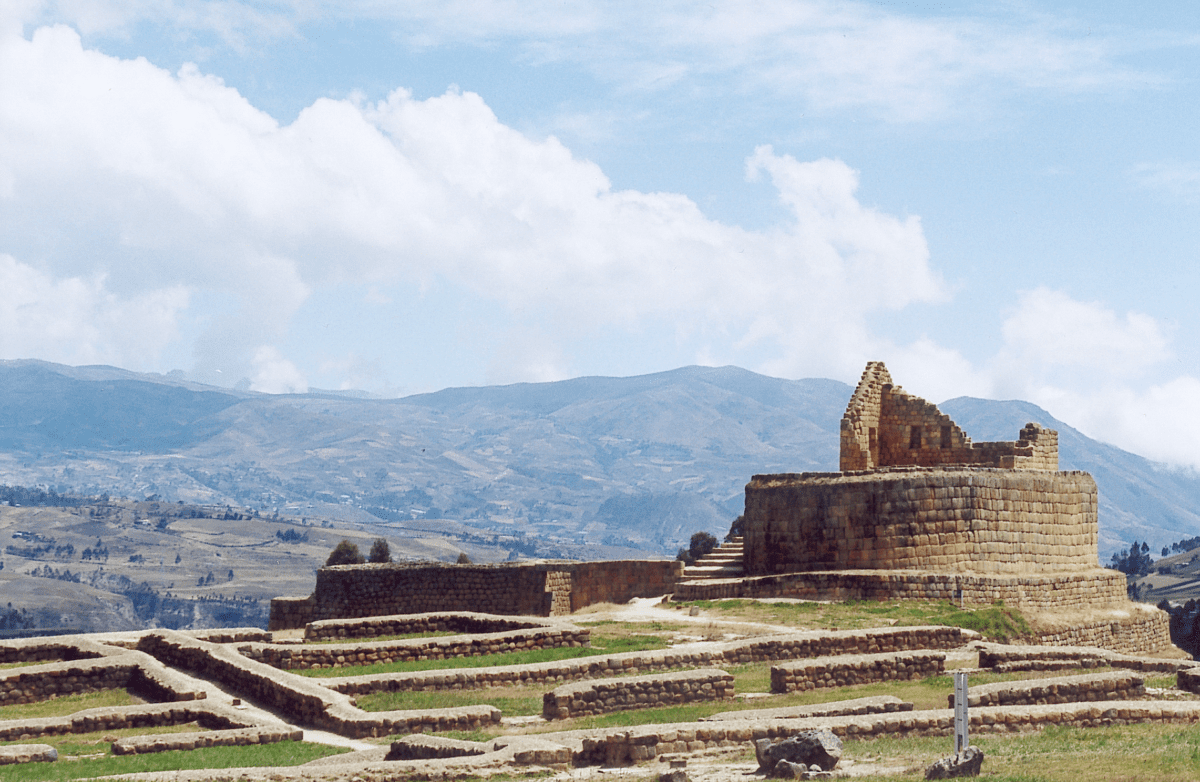The ruins of Ingapirka, located in Ecuador, are a fascinating archaeological site that offers insights into the history and culture of the Inca civilization in the region. The name “Ingapirka” is of Quechua origin, with “Inga” referring to the Inca people and “pirka” meaning “wall.” The site is often referred to as the “Inca Fortress” due to its strategic location and the presence of defensive structures. Here’s a brief overview of the history of the ruins of Ingapirka:
Pre-Inca Period:
Before the Inca Empire’s expansion into the region, the area around Ingapirka was inhabited by indigenous peoples. The Canari culture is believed to have been present in the region before the Inca arrival. These cultures had their own architectural styles and practices.
Inca Influence:
The Inca Empire, known for its remarkable architecture and engineering feats, extended its influence into what is now modern-day Ecuador during the 15th century. The Incas recognized the strategic importance of the region, and Ingapirka’s location made it a significant site for various reasons.
Ingapirka was likely constructed during the reign of Huayna Capac, the ninth ruler of the Inca Empire, who ruled from around 1493 to 1525. It’s thought that Ingapirka served as a way station along the Inca road system, which was a network of well-constructed roads that connected different parts of the empire. This allowed for efficient communication, movement of troops, and trade between distant regions.
Architectural Features:
The ruins of Ingapirka showcase classic Inca architectural techniques, including finely cut stones that fit together without the use of mortar. The site features terraced platforms, a ceremonial plaza, a sun temple, living quarters, water channels, and more. One of the most notable structures is the elliptical-shaped building known as the “Temple of the Sun,” which aligns with astronomical events.
Spanish Conquest:
The arrival of Spanish conquistadors, led by Francisco Pizarro, in the early 16th century marked the downfall of the Inca Empire. The Spanish conquest had a profound impact on the indigenous cultures, and many sacred sites were looted, destroyed, or repurposed.
Rediscovery and Preservation:
Ingapirka was largely forgotten by the outside world for centuries after the Spanish conquest. It wasn’t until the 19th and 20th centuries that archaeologists and researchers began to investigate and document the site. Efforts to preserve and restore Ingapirka as a cultural heritage site have continued into the present day.
Today, Ingapirka stands as a testament to the engineering prowess and cultural significance of the Inca civilization in the region. It serves as a tourist attraction, drawing visitors interested in history, architecture, and the ancient cultures of Ecuador. The ruins provide a glimpse into the complex networks of the Inca Empire and the interactions between different cultures in the Andean region.
The Ecuadorian Inca Trail to Ingapirka
The Ecuadorian Inca Trail, also known as the Ingapirca Trail, is a hiking route that connects the city of Cañar to the archaeological site of Ingapirka in Ecuador. This trail offers hikers the opportunity to experience the natural beauty of the Andean landscape while also exploring historical and cultural sites along the way. Here’s an overview of the route and how it arrives at Ingapirka:
Route Description:
The Ecuadorian Inca Trail typically starts in the town of Cañar, which is located in the Cañar Province of southern Ecuador. Cañar is known for its indigenous culture and historical significance. From Cañar, hikers follow a path that takes them through the scenic Andean countryside, passing through highland villages, agricultural fields, and stunning mountain vistas.
Ingapirka Arrival:
After several days of hiking, the trail leads hikers to the archaeological site of Ingapirka. The exact length of the trail and the time it takes to complete it can vary depending on the starting point, the pace of the hikers, and the specific route taken. Some variations of the trail can take around 3 to 5 days to complete.
The arrival at Ingapirka is a significant highlight of the trail. Hikers are rewarded with the opportunity to explore the well-preserved Inca ruins, including the Temple of the Sun, the elliptical plaza, and other structures that showcase Inca architectural techniques.
Cultural and Historical Significance:
The Ecuadorian Inca Trail not only offers a physical adventure through the Andean landscape but also provides insights into the historical and cultural aspects of the region. Along the trail, hikers might encounter indigenous communities, interact with locals, and learn about traditional practices and ways of life that have been preserved for generations.
Ingapirka, as the final destination of the trail, provides a unique opportunity to connect with the history of the Inca Empire’s presence in Ecuador. Hikers can explore the archaeological site, guided by its layout, architecture, and the information provided by local guides or interpretive signs. This experience deepens the understanding of the Inca civilization’s reach into the region and its influence on local cultures.
Preparation and Logistics:
Before embarking on the Ecuadorian Inca Trail, hikers should make necessary preparations, including obtaining the proper permits, arranging accommodations (if necessary), packing appropriate gear, and considering the physical demands of the hike due to the varying altitudes and terrain. It’s important to note that trail conditions and logistics can change over time, so it’s recommended to check with local tour operators or official sources for the most up-to-date information on the trail, permits, safety guidelines, and recommended itineraries.



0 Comments